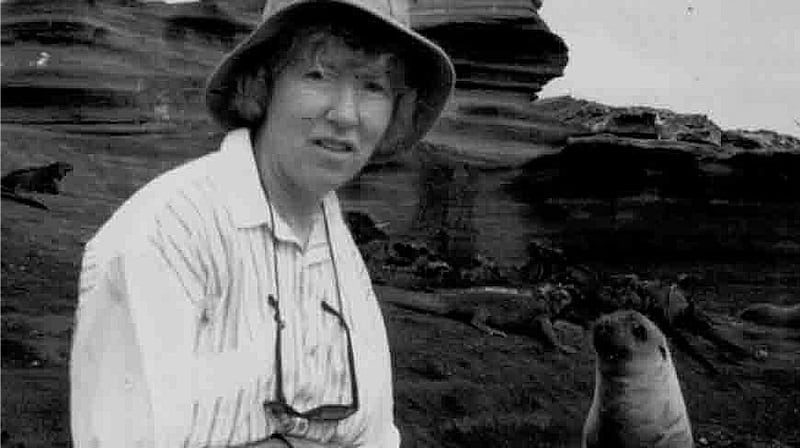Dr Anne Kernan
Born January 15th, 1933 Died: May 11th, 2020
Dr Anne Kernan, the Dublin-born physicist who was on the research team of Prof Carlo Rubbia and Dr Simon van der Meer, winners of the 1984 Nobel prize for physics, has died in Florida. One of a small number of high-ranking female physicists of her generation, Dr Kernan spent the latter half of her career lecturing at the University of California, Riverside in the United States and as a researcher at CERN, the European organisation for nuclear research near Geneva in Switzerland.

Growing up the second child of four to Annie Connor and Frederick Kernan in the Dublin suburb of Glasnevin, Kernan showed an early interest in science.
In an Irish Times interview in 2010, she said “as a little girl during the war years, everyone was talking about Oppenheimer, splitting the atom and the atomic bomb. I was curious about all of that. None of my family was involved in science but my mother and father read widely and discussed everything”.
In an American Scientist magazine interview, she elaborated further on how her love of science was nurtured. “As a child, I was amazed to learn from my father the distance to the stars and the expected death of the sun. When my mother read Madame Curie’s biography, she discussed it with me at length. In our family, we were always encouraged to discuss and to question conventional wisdom.”
She believed a career in science would be a 'romantic and idealistic adventure'
She believed a career in science would be a “romantic and idealistic adventure” and specifically chose to attend the Dominican College on Eccles St, so she could study physics. Following her secondary education, she studied science, specialising in physics at University College Dublin. She graduated with a first-class honours degree as the only female in the class of 1952. She obtained her PhD in physics at UCD in 1957 and lectured there for a further four years.
Then she won a scholarship for post-doctoral research at the Lawrence Radiation Laboratory (now the Lawrence Berkeley National Laboratory) at the University of California at Berkeley. On her arrival, she noticed even fewer female physicists than on European campuses. “Women were encouraged more towards biology. I found it more sexist at Berkeley and although I didn’t have any problems at all, I think they were surprised by me,” she said.
She next moved to the Linear Accelerator Center at Stanford University for a year. In 1967, she joined the Department of Physics at the University of California, Riverside (UCR) and became an associate professor in physics the following year. She later served as chair of the physics department, vice chancellor for research and dean of the graduate division – becoming the first woman to serve in all these positions.
At UCR, Dr Kernan taught all aspects of physics while pursuing her own research into elementary particles – the search for the ultimate constituents of matter and the forces that bind them together. Within the high energy physics community, she was known as an innovative, kind and generous group leader. She was a fellow of both the American Physical Society and the American Association for the Advancement of Science.
In the 1980s, Dr Kernan signed up to work with a research group on photographic emulsions at CERN but when she saw the work that Prof Rubbia was doing, she switched. In 1983, she led the US team on the multinational Nobel-prize winning experiment at CERN which discovered the two sub-atomic particles, W and Z bosons. In recognition of her contribution, she was invited to the Nobel Prize ceremony in Stockholm. Her work is widely acknowledged in Prof Rubbia’s research papers.
In 1986, Dr Kernan’s interest in high energy particle physics prompted a move to the DZero experiment at the Tevatron collider at the Fermi National Accelerator Laboratory (Fermilab) near Chicago. Her research group was part of the team that went on to discover the top quark in 1995.
Throughout her career, Dr Kernan was a strong advocate of women in science and was a member of the American Physics Society committee on the status of women in physics. Prof Natalie Roe, director of the physics division at the Lawrence Berkeley laboratory in California remembers that when she was an undergraduate, Dr Kernan funded her research trip to CERN in Geneva, met her at the airport on her arrival and even withdrew money to help her survive until she was paid.
Dr Kernan attributed her own early success to her own forthright manner and expectation to be treated fairly, the positive attitude towards women at the University of California, Riverside physics department and the fact that it was a smaller, newer campus in the nine-campus University of California. She said that the more prestigious the institution, the greater the prejudice and discrimination experienced by women.
Outside of her work, Dr Kernan enjoyed hiking, skiing, cooking and the arts. Her brother, Gerard, lived in California for a number of years in the 1960s and 1970s so they regularly spent time together, hiking. Latterly, she remained in close contact with him and his wife, Mary and their children in Glasnevin and her brother Denis in Rathfarnham.
Following her retirement from UCR, Dr Kernan moved to live with her older sister, Una – first in Massachusetts and then later, to an assisted living residence in Panama City Beach in Florida.
Dr Anne Kernan is survived by her sister, Una, and her brother, Denis, nieces, nephews, grand-nieces and grand-nephews. Her brother, Gerard pre-deceased her in April 2020.










